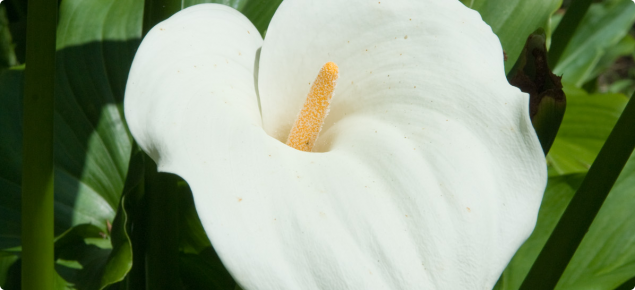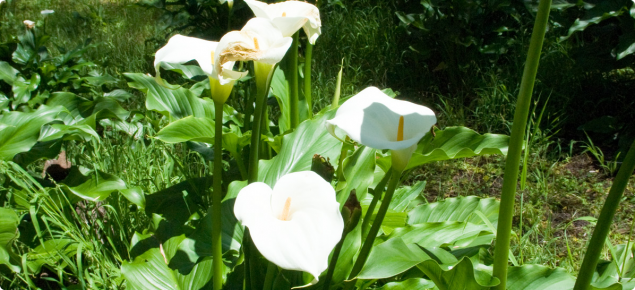Information about this pest can be found on the arum lily: declared pest page.
Login or set up a new account on DAFWAs online training site to access:
- a training course on how to identify arum lily and report it.
- training material that you can use to teach community groups how to identify arum lily.
Chemical requirements
When using any agricultural chemicals please ensure that you always follow instructions on the label and any permit. Users of agricultural chemical products must always strictly comply with the directions on the label and the conditions of any permit. To view permits or product labels go to the Australian Pesticides and Veterinary Medicines Authority website
Control options
Chemical control options can be found below. For other methods of control please refer to the aquatic weed control page, and the declared plant control handbook.
Chemical control options
| Recommended herbicides | June-October
|
|---|
| Herbicide: Chlorsulfuron (Group B) (various trade names: see APVMA link) | |
|---|---|
| Active ingredient | 750g/kg chlorsulfuron |
| Rate of dilution for spot spraying | 1g to 50L |
| Rate of product/10L water | 0.2g |
| Rate of product/ha | 20g |
| Wetting gent dilution | 1:400 |
| Time of application | June–October (best results when flowering) |
| Remarks |
|
| Herbicide: Metsulfuron (Group B) (various trade names: see APVMA link) | |
|---|---|
| Active ingredient | 600g/kg metsulfuron |
| Rate of dilution for spot spraying | 0.75g to 50L |
| Rate of product/10L water | 0.2g |
| Rate of product/ha | 20g |
| Wetting agent dilution | 1:400 |
| Time of application | June-October (best results when flowering) |
| Remarks |
|
| Herbacide: Paraquat (Group L) (various trade names: see APVMA link) | |
|---|---|
| Active ingredient | 250g/L paraquat |
| Rate of product/10L water | 20mL |
| Rate of product/ha | 2L |
| Wetting agent dilution | 1:400 or 1:1000 of BS-1000 |
| Remarks |
|
| Herbicide: 2,4-D amine (Group I) (various trade names: APVMA link) | |
|---|---|
| Active ingredient |
|
| Rate of dilution for spot spraying |
|
| Rate of product/10L water |
|
| Rate of product/ha |
|
| Wetting agent dilution | 1:1000 |
| Remarks |
|



